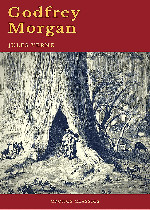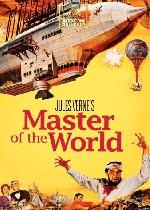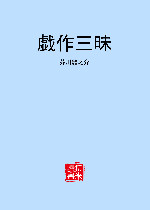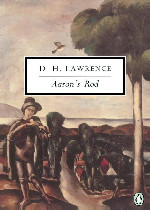
Godfrey Morgan: A Californian Mystery (French: L'École des Robinsons, literally The School for Robinsons), also published as School for Crusoes, is an 1882 adventure novel by French writer Jules Verne. The novel tells of a wealthy young man, Godfrey Morgan who, with his deportment instructor, Professor T. Artelett, embark from San Francisco, California on a round-the-world ocean voyage. They are cast away on an uninhabited Pacific island where they must endure a series of adversities. Later they encounter an African slave, Carefinotu, brought to the island by cannibals. In the end, the trio manage to work together and survive on the island.

The Master of the World(世界主宰者) 立即阅读
Master of the World (French: Maître du monde), published in 1904, is one of the last novels by French pioneer science fiction writer, Jules Verne. It is a sequel to Robur the Conqueror. At the time Verne wrote the novel, his health was failing. Master of the World is a "black novel," filled with foreboding and fear of the rise of tyrants such as the novel's villain, Robur, and totalitarianism. Set in the summer of 1903, a series of unexplained events occur across the Eastern United States, caused by objects moving with such great speed that they are nearly invisible.

戯作三昧(げさくざんまい)とは。芥川竜之介の小説。大正6年(1917)発表。戯作の執筆にふける曲亭馬琴 (きょくていばきん) を主人公として、作者自身の芸術至上主義の境地を示す歴史小説。江戸末期の市井の風俗の中で、芸術至上主義の境地を生きた馬琴に、自己の思想や問題を託した「戯作三昧」、仇討ちを果した赤穂浪士の心理に新しい照明をあてて話題を呼んだ「或日の大石内蔵之助」などの“江戸期もの”。

Years ago, when I was very small, we lived in a great house in a long, straight, brown-coloured street, in the east end of London. It was a noisy, crowded street in the daytime; but a silent, lonesome street at night, when the gas-lights, few and far between, partook of the character of lighthouses rather than of illuminants, and the tramp, tramp of the policeman on his long beat seemed to be ever drawing nearer, or fading away, except for brief moments when the footsteps ceased, as he paused to rattle a door or window, or to flash his lantern into some dark passage leading down towards the river.

Aaron's rod refers to any of the staff carried by Moses's brother, Aaron, in the Torah. The Bible tells how, along with Moses's rod, Aaron's rod was endowed with miraculous power during the Plagues of Egypt that preceded the Exodus. There are two occasions where the Bible tells of the rod's power.